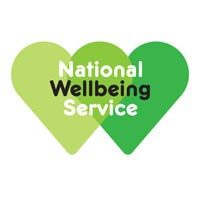World Suicide Prevention Day – 10 September, 2016

The International Association for Suicide Prevention (IASP) and the World Health Organization (WHO) co-sponsor World Suicide Prevention Day every year on September 10th. The National Wellbeing Service, IASP and WHO are encouraging people to light a candle near a window at 8 PM to show support for suicide prevention, to remember a lost loved one through suicide and for the survivors of suicide.
Lighting a Candle near a Window at 8 PM
Lighting a Candle near a Window at 8 PM offers people who cannot participate in a World Suicide Prevention Day event the opportunity to observe the Day in a private and personal way.
The theme of World Suicide Prevention Day this year is “Suicide Prevention: One World Connected.” Every year, over 800,000 people die from suicide; this roughly corresponds to one death every 40 seconds. The number of lives lost each year through suicide exceeds the number of deaths due to homicide and war combined. Suicide is the fifth leading causes of death among those aged 30-49 years in 2012 globally. Suicide is the second leading cause of death in the 15-29 years age group in 2012 globally. Overall, it is estimated that during 2012 for each adult who died of suicide there were over 20 others who made suicide attempts.
The psychological pain that leads each of these individuals to take their lives is unimaginable. In 2012, suicide accounted for 1.4% of all deaths worldwide, making it the 15th leading cause of death. Mental disorders (particularly depression and alcohol use disorders) are a major risk factor for suicide in Europe and North America; however, in Asian countries impulsiveness plays an important role.
Suicide is complex with psychological, social, biological, cultural and environmental factors involved. Connectedness is crucial to individuals who may be vulnerable to suicide. Studies have shown that social isolation can increase the risk of suicide and, conversely, that having strong human bonds can be protective against it. Reaching out to those who have become disconnected from others and offering them support and friendship may be a life-saving act.
IASP has prepared special Light a Candle near a Window at 8 PM postcards or e-cards in various languages so supporters can send these reminders to friends, colleagues and loved ones. Also, these postcards can be used by bloggers, writers and others so that they can share information about suicide, suicide prevention and World Suicide Prevention Day. Postcards can be downloaded from the IASP Web site at https://goo.gl/ZXnYzS
World Suicide Prevention Day 2016, Fact Sheet Suicide Prevention
• Every year, over 800,000 people die from suicide; this roughly corresponds to one death every 40 seconds.
• The number of lives lost each year due to suicide exceeds the number of deaths due to homicide and war combined.
• Suicide is the 15th leading cause of death globally, accounting for 1.4% of all deaths in 2012.
• Globally suicide rates are highest for people 70 years and over.
• Suicide is the fifth leading causes of death among those aged 30-49 years in 2012 globally.
• Suicide is the second leading cause of death in the 15-29 years age group in 2012 worldwide.
• 75% of all global suicide deaths occur in low-middle income countries.
• It is estimated that during 2012 for each adult who died of suicide there were over 20 others who made suicide attempts.
• Suicide is complex with psychological, social, biological, cultural and environmental factors involved.
• The strongest risk factor for suicide is a previous suicide attempt.
• Mental disorders (particularly depression and alcohol use disorders) are a major risk factor for suicide in Europe and North America; however, in Asian countries impulsiveness plays an important role.
• In addition, experiencing conflict, disaster, violence, abuse, bereavement or loss and isolation are strongly associated with suicidal behavior.
• Suicide rates are elevated amongst vulnerable groups who experience discrimination, such as refugees and migrants; indigenous peoples; lesbian, gay, bisexual, transgender, intersex (LGBTI) persons; and prisoners.
• Reaching out to those who may be struggling or may have become disconnected from others and offering support can be a life-saving act.
• Reaching out involves active listening and engaging with a person in a non-judgmental and supportive way.
• An important aspect of reaching out also involves linking people to relevant professional services to ensure appropriate care and follow-up for that person.
• Reaching out to persons bereaved by a suicide is of equal importance. By giving a person the opportunity to talk about their loss, in their own time and on their own terms can also provide a lifeline.
• Find research relating to connecting, communicating and caring and, suicide prevention and mental health at https://www.iasp.info/resources/World_Suicide_Prevention_Day/2016/

![]()


